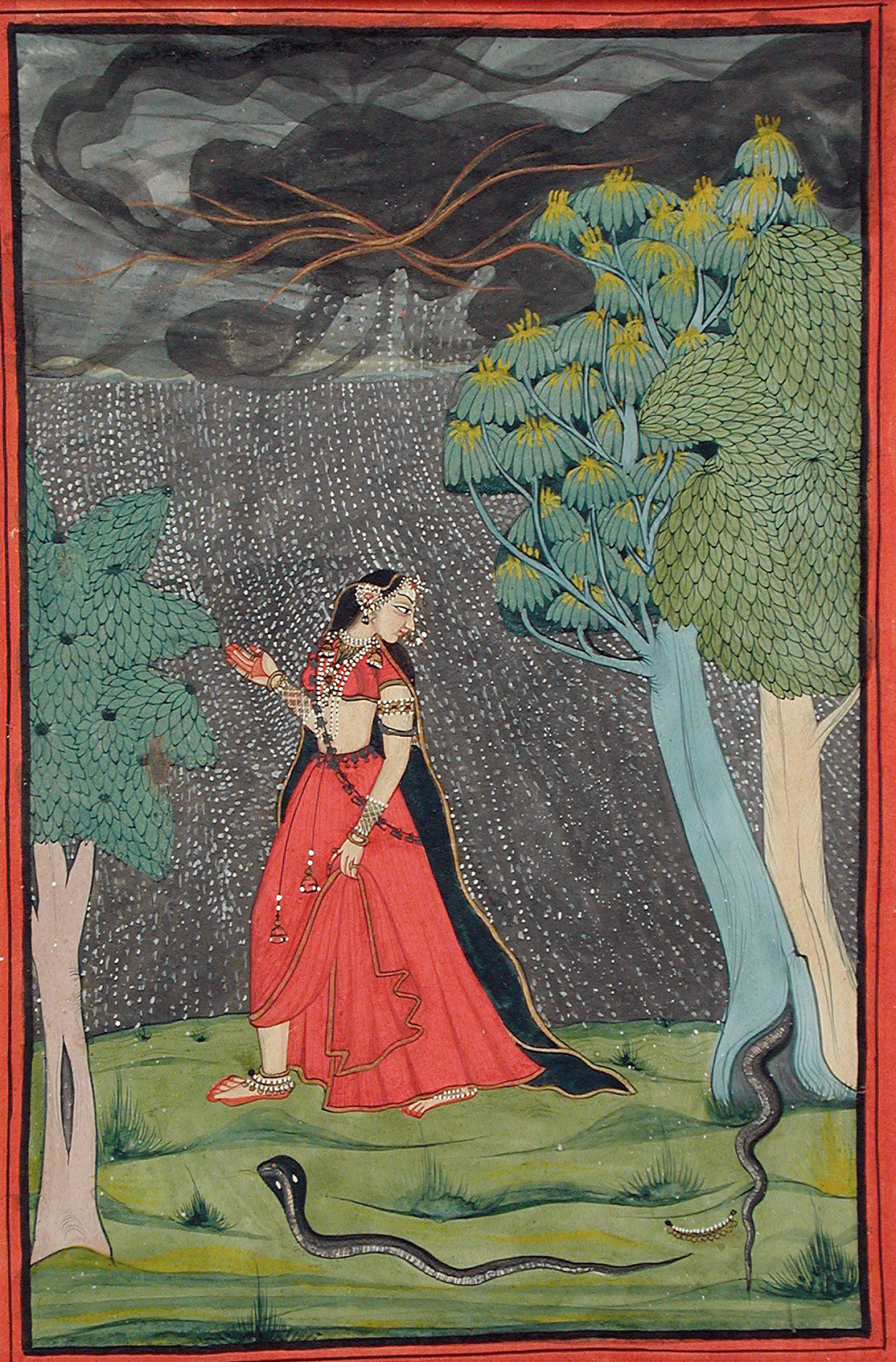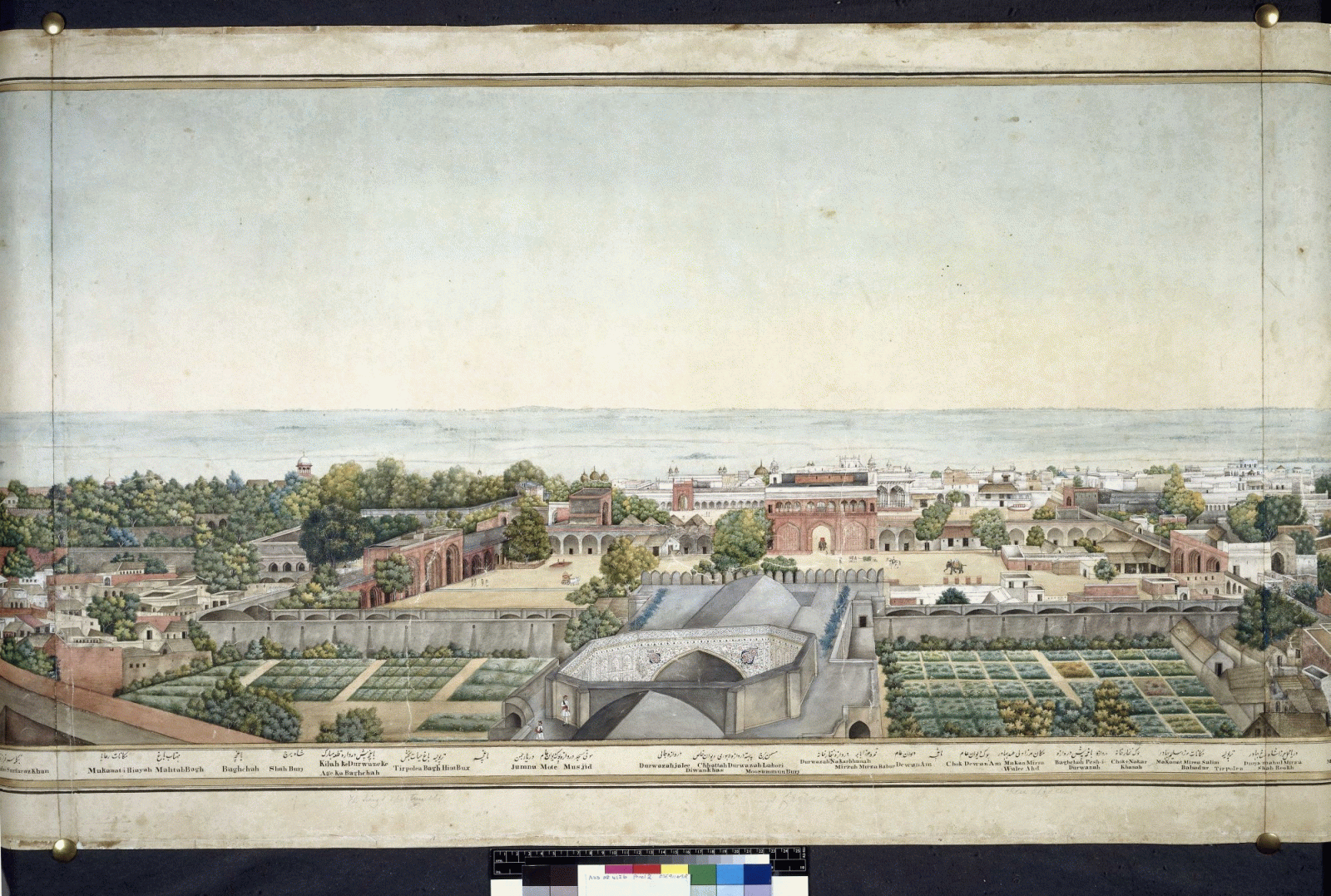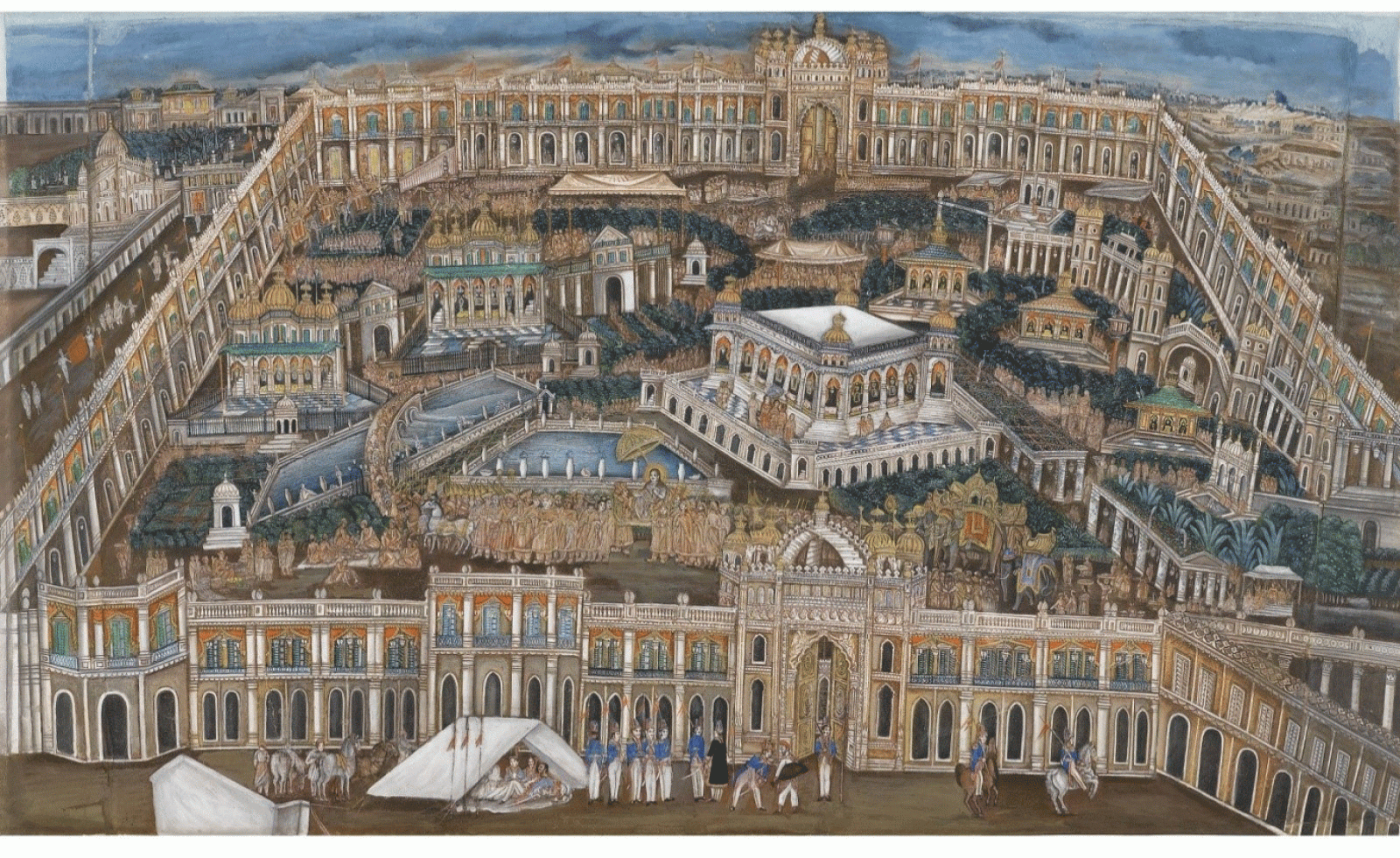4A Lab Seminar
Margrit Pernau and Parul Singh:
Aesthetics, Politics and Emotions in South Asian Royal Garden Culture

"The Eager Heroine on Her Way to Meet Her Lover out of Love" (Kama Abhisarika Nayika). Attributed to Mola Ram, India, Garhwal, ca. 1743-1833. Gift of Jane Greenough Green in memory of Edward Pelton Green (AC1999.127.4). Courtesy: Los Angeles County Museum of Art, South and South East Asian Art.
This event will host two presentations: "Perfection and Plenitude: Emotions in the Late-Mughal Gardens of Delhi" by Margrit Pernau (Senior Researcher, MPI for Human Development, Berlin) , and “‘They All Turned Saffron in the Gardens of Qaiserbagh:’ Analysing Wajid Ali Shah’s Jogia Melas" by Parul Singh (4A_Lab Postdoctoral Fellow). The double presentation will be followed by a joint discussion with the authors on the topic of the aesthetic, political and emotional dimensions of royal garden culture in 19th-century South Asia.
Margrit Pernau: Perfection and Plenitude: Emotions in the Late-Mughal Gardens of Delhi
How and what did people feel in the space of a garden? What emotions did green spaces stir in their onlookers? In this talk, Margit Pernau investigates emotions as social phenomena in South Asia by looking at the visual representations of two famous Late-Mughal gardens in Delhi: the char bagh in the Royal Palace and the Royal Gardens in Mehrauli. Upon discussing their different visual qualities and the distinct intermedial references they drew upon, she shows how these two typologies of garden gave rise to divergent moods and emotions in the onlooker.
The char bagh in the Royal Palace (today's Red Fort) was the most famous garden in late-19th century Delhi. As the name indicates, the gardens adhering to this typology were divided by water canals into a succession of symmetrical beds of grass and flowers—one for each of season of the year. The waterways not only provided a cool microclimate in the heat of tropical summer, but also served as a reference to the “four streams” of the Islamic paradise—a space of supreme, yet calm, emotional pleasure. The flowers growing in the char bagh, notably the roses, the tulips, and the hyacinths, carried a plethora of emotional and figurative associations whose origin and development is to be sought in the classical ghazal. While we cannot tell with certainty what emotions could such a bucolic vision possibly stir in the heart of a nobleman wandering through the garden, we can hardly imagine how a cultivated noble could contemplate these flowers without hearing poetry resonate in his inner mind and experiencing the emotion of ishq (“passionate love”), which the ghazal traditionally associated to the floral motifs.
The images and emotions encoded in the char bagh drew on a purely Indo Persian imagery, rooted in the ideal of “the attainment of civilization” (tahzib ul akhlaq) that emphasized harmony and balance. On the contrary, the gardens in Mehrauli, 10 miles south of Delhi—the place where the royal family used to withdraw during summer—referenced the typical Indic imaginary associated with the monsoon season, and its corresponding mood, or feeling: erotic love (shringara). The orchards brimming with fruit, the running streams, and the rich fauna depicted in the miniatures of the Mehrauli Gardens all hint at the symbolism of the rainy season as found in ragamala paintings and popular bara masa songs. By interweaving visual examples and textual evidence, Margit Pernau demonstrates how in the late-Mughal period emotions were conceived as relational phenomena, unfolding between people rather than within people, and finding legitimation in the metaphorical realm of classical Indo-Persian poetry.
Parul Singh: “They All Turned Saffron in the Gardens of Qaiserbagh:” Analysing Wajid Ali Shah’s Jogia Melas
In 1853, Wajid Ali Shah, the last king of the princely state of Awadh (Oudh), threw open the grounds of his Qaiserbagh Palace Complex in Lucknow for an unprecedented event: a mela, or fair, where all the king’s subjects were invited to participate regardless of their socio-economic status, caste, religion, or gender—the only condition being that the attendees be dressed in saffron colour, the colour traditionally associated with ascetism in the Indian Subcontinent. The Jogia Melas, or “Fair of the Hermits,” as these gatherings were popularly known, were celebrated again in 1854 and 1855, just before the British East India Company annexed Awadh in 1856.
In this talk, Parul Singh shows how the opening of the grounds and gardens of the Qaiserbagh for the popular Jogia Melas was a strategic move by Wajid Ali Shah to claim temporal and spiritual power in a time when the East India Company was significantly encroaching upon his political authority. The regolation of conditional access to the palace complex and the validation provided by the subjects' display of loyality made the Qaiserbagh Gardens the locus for the king’s assertion of authority. Parul Singh also reconstructs the ways in which Wajid Ali Shah ritually reconstituted time and space upon his person by dressing up as a jogi (ascetic) and performing in front of a selected audience, arguining that the site provided an ideal staging ground for the king to play out the well entrenched but opposing cultural tropes of the ruler as the ultimate bhogi—the consumer of all pleasures par excellence—and exemplary jogi—the renouncer or hermit. The convergence of cross-cultural metaphors and discourses on the “otherworldly garden” in the space of the Qaiserbagh further demonstrate that the Royal Gardens of Awadh were purposefully imagined and depicted as a paradise on earth. Even after Wajid Ali Shah's kingdom was annexed in 1856, the lost magic of Qaiserbagh kept lingering in nostalgic poetry and songs that followed its demolition and eventual erasure from Lucknow’s urban landscape.
09 novembre 2021, ore 16:00
Online seminar series
Avviso
Questo evento viene documentato fotograficamente e/o attraverso riprese video. Qualora non dovesse essere d’accordo con l’utilizzo di immagini in cui potrebbe essere riconoscibile, da parte del Kunsthistorisches Institut in Florenz a scopo di documentazione degli eventi e di pubbliche relazioni (p.e. social media) la preghiamo gentilmente di comunicarcelo.




